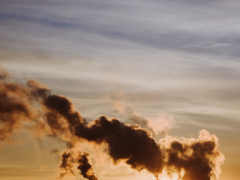Opportunities in G20 Countries for Long-term, Low-emission Pathways
Opportunities exist in G20 countries (Australia, Brazil, Canada, China, EU, India, Indonesia, Japan, Republic of Korea, Russian Federation, and the United States) to strengthen existing climate policies.
It can be shown from analyses at the national level that the emission reductions consistent with global pathways to reach the overall targets of the Paris Climate Agreement can be implemented. This is the main conclusion of a set of 11 national fact sheets developed as part of the COMMIT project. Implementing these opportunities will require a massive redirection of current investments and using the possible synergies between climate policies and other national development objectives.
The COMMIT project has submitted five of these fact sheets to the Talanoa Dialogue, part of the Paris Agreement, to provide negotiators with the latest findings on national long-term, low-emission pathways, informing the development process of mid-century low-carbon strategies. Fact sheets for all 11 COMMIT countries are available on the website.
These country fact sheets for 11 major economies present research findings on national long-term, low-emission pathways along the three Talanoa Dialogue questions: where are we, where do we want to go, and how do we get there? The results highlight opportunities for enhancing ambition levels and present success stories, and particularly address country-specific topics, as these play a key role in developing low-carbon policies. These topics include sustainable intensification of agriculture (Brazil), low-carbon oil sands production technologies (Canada), the role of hydrogen and clean renewable-energy-based gas (EU), and the role of nuclear power (Japan). For Brazil, for example, opportunities from AFOLU and non-CO2 mitigation could reduce pressure on productive sectors. In Japan, achieving the NDC with a limited deployment of nuclear power could be more challenging, but also promotes new business opportunities for the renewable energy sectors.
The findings will be presented at the UN Climate Change Conference in Katowice (Poland) in December (COP24), during two side events.
- The first side event will take place on 13 December, 14:30–16:00 hrs at the EU pavilion, and is titled What a low-carbon world really looks like in the next decades: Modelling tools used and required for long-term planning.
- The second side event will take place on 13 December, 18:30–20:00 hrs in the Bieszczady room, and is titled NDC and LTS modelling: opportunities, lessons learnt and roadmaps for Brazil, Indonesia, Mexico.
About COMMIT
The COMMIT project—Climate pOlicy assessment and Mitigation Modeling to Integrate national and global Transition pathways—aims to improve the modelling of national low-carbon emission pathways, and to improve analysis of country contributions to the global ambition of the Paris Agreement. The consortium consists of 18 international research teams, including 14 national modelling teams in G20 countries, who regularly support domestic policymaking, and global integrated assessment modelling teams with extensive experience on global-scale modelling of climate change policies. The project is funded by the European Commission’s Directorate-General for Climate Action (DG CLIMA).
The global stocktaking process of the Paris Agreement requires sufficient analytical capacity to ensure fair evaluation of country policies, and requires a good understanding of the differences in outcomes and assumptions between the analytical teams that provide input into the negotiations. The COMMIT research project aims to contribute the analytical capacity to this process. Its contribution to the Talanoa Dialogue in 2018, preceding the official global stocktake which starts in 2023, is to jointly develop insights by discussing analyses of national and global low-carbon pathways among project partners and with policymakers.




